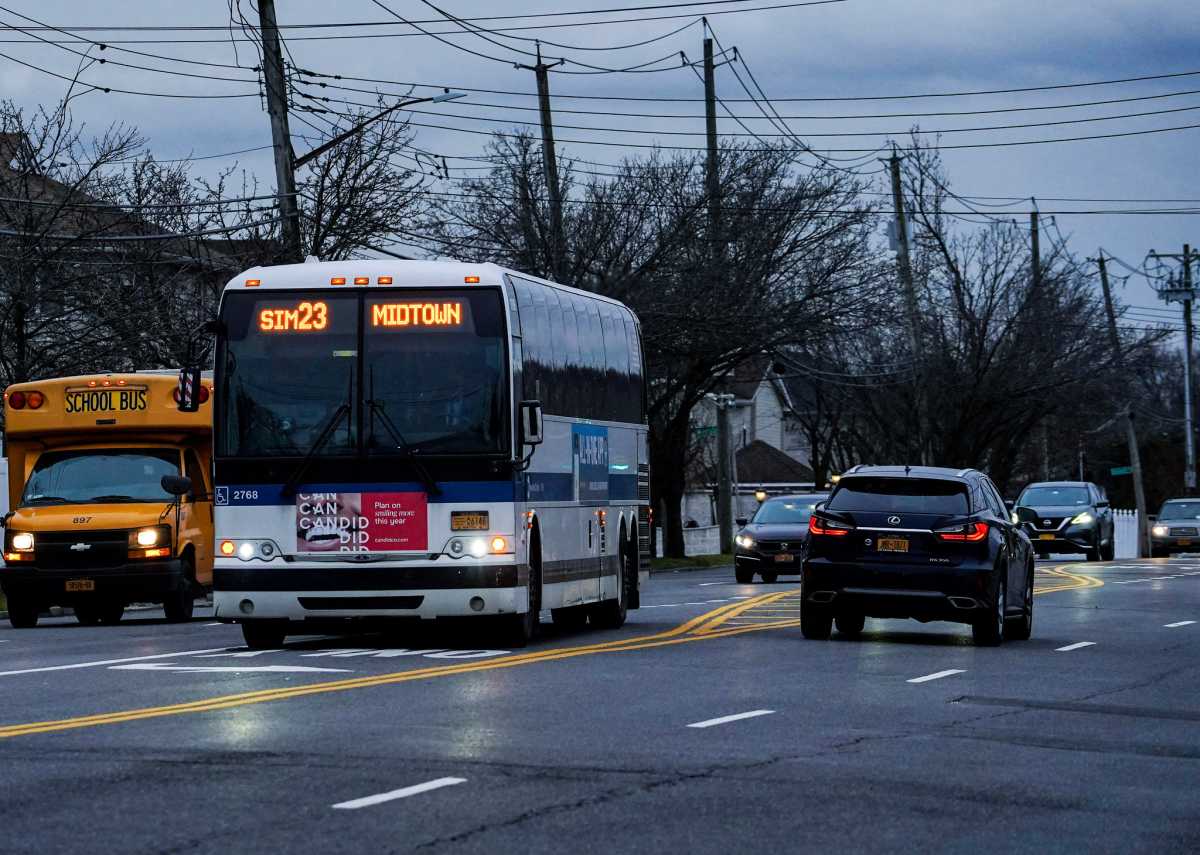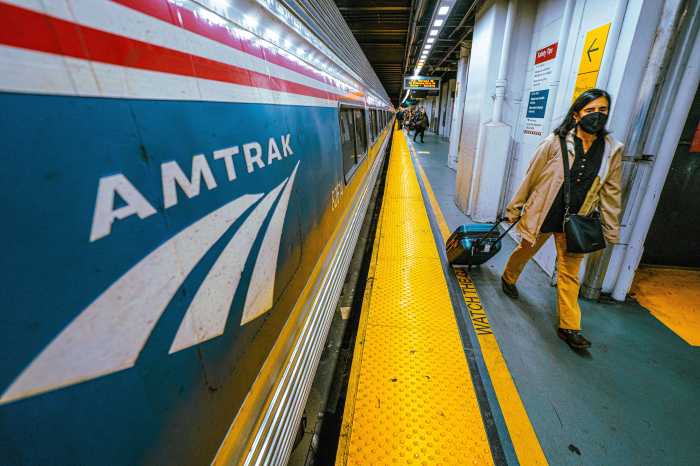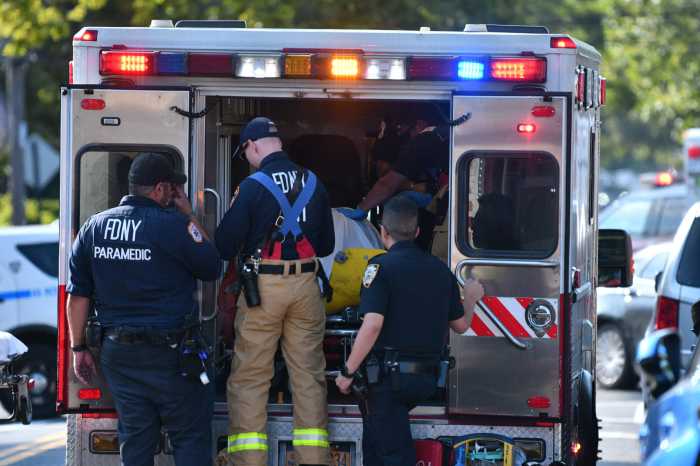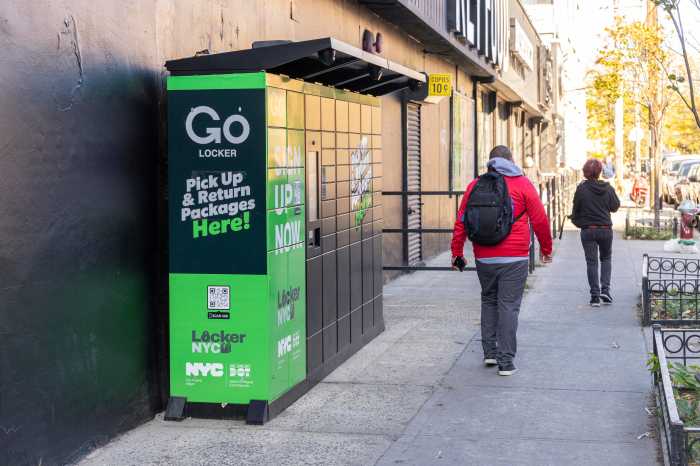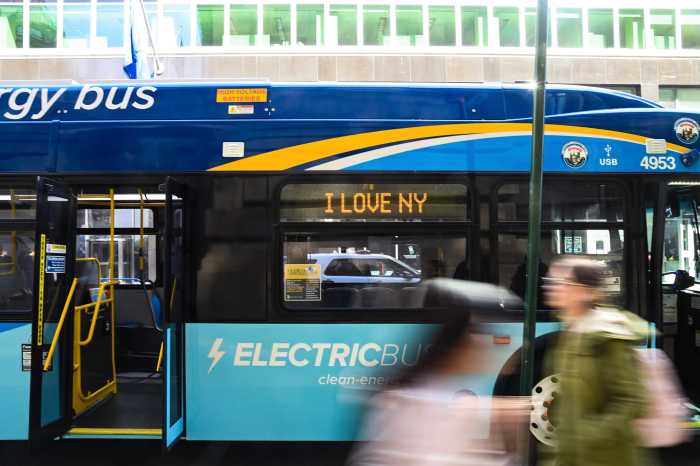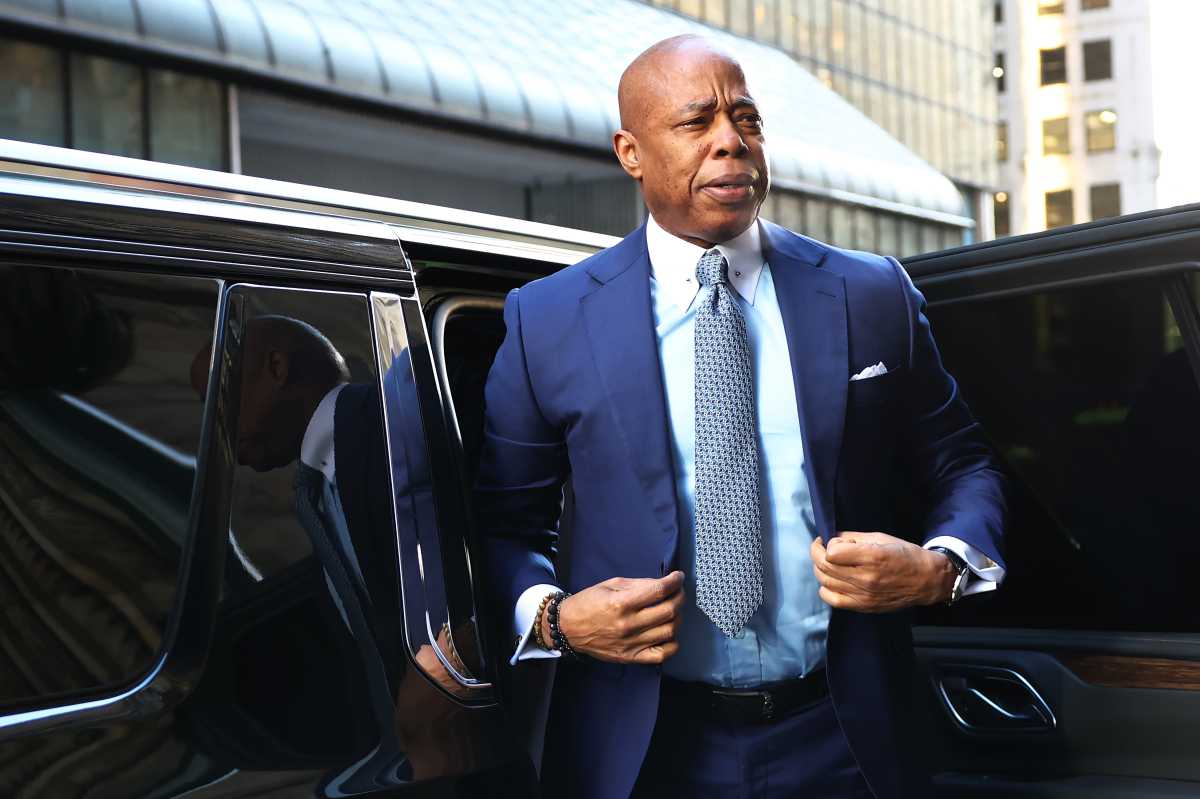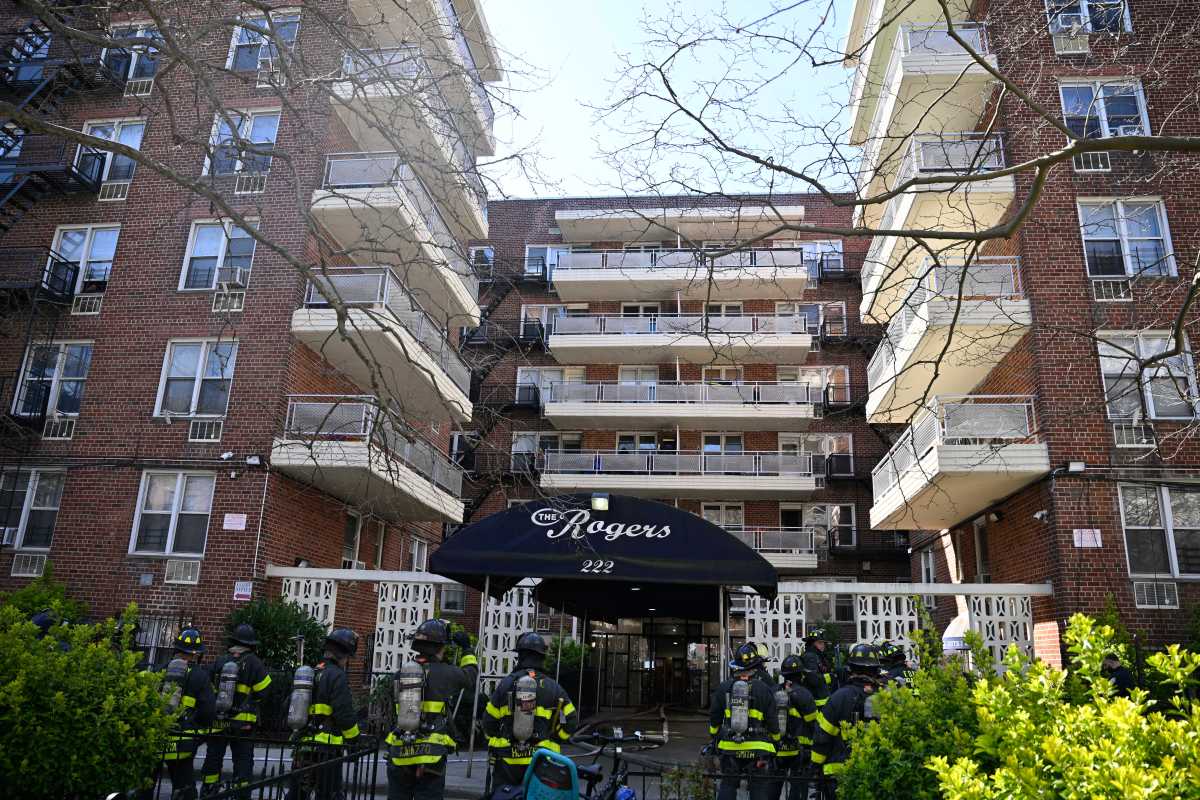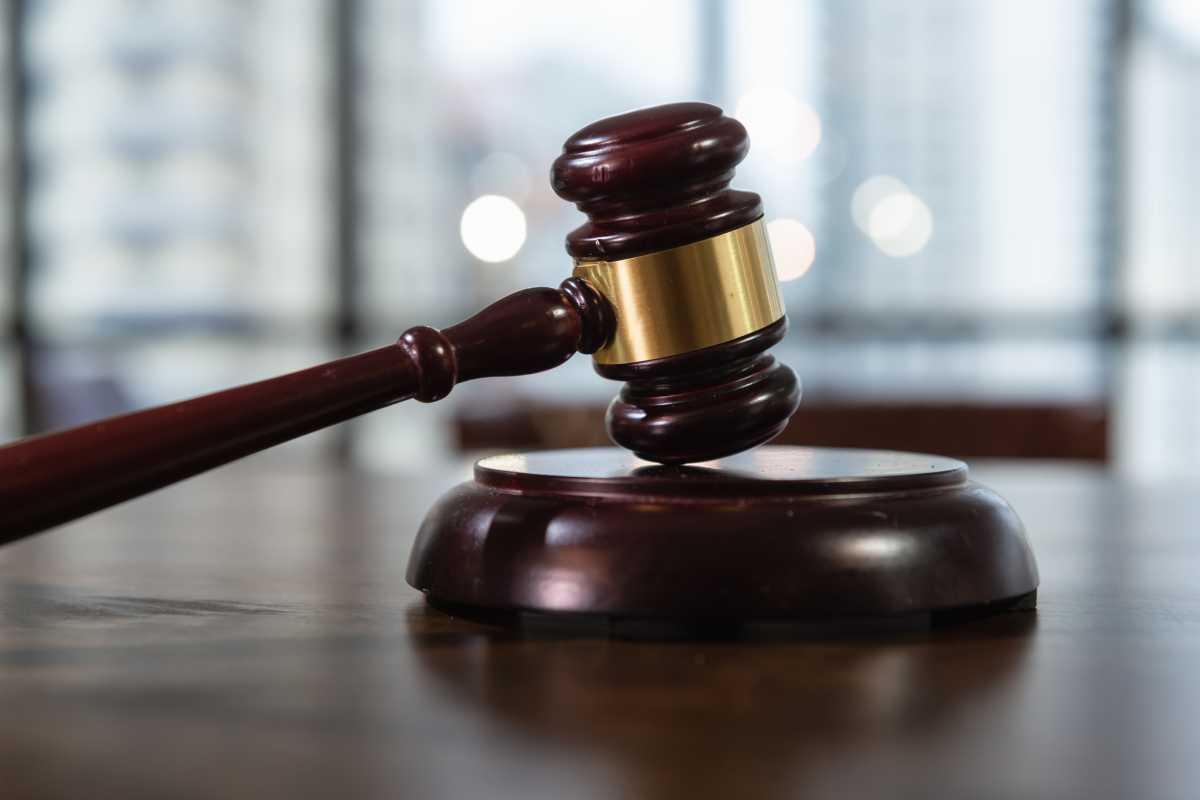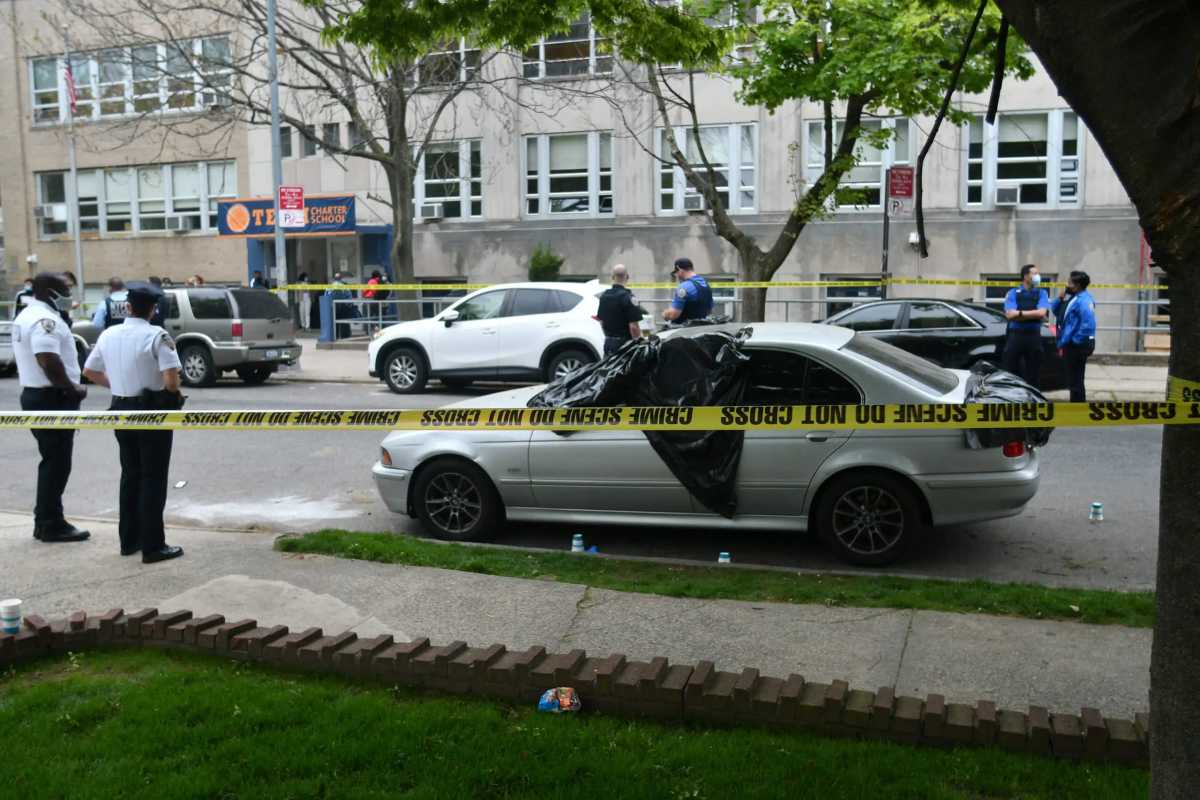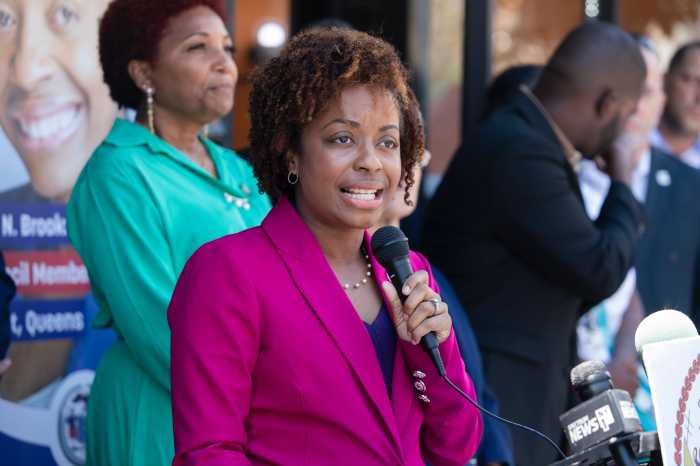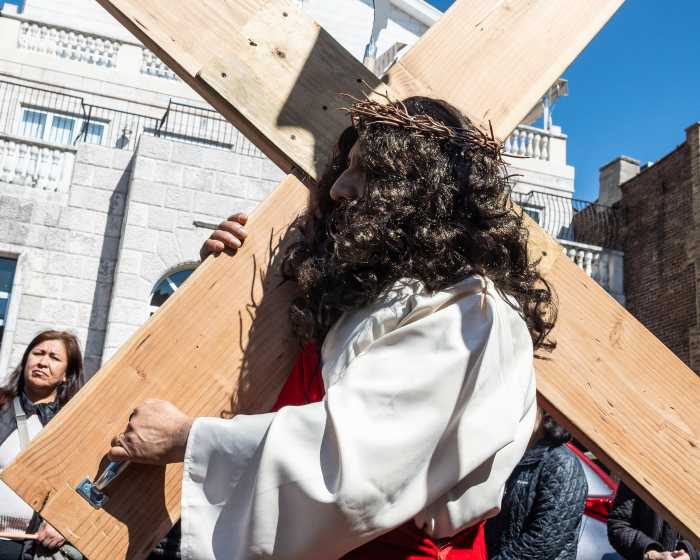The MTA plans to boost service on various express bus lines in a bid to spur drivers to switch to mass transit as congestion pricing takes effect in New York City.
Express buses with the highest weekday ridership will see additional trips per day starting in June should the plan be approved by the MTA Board this week, according to a document posted on the MTA’s website. The routes take riders from outer borough neighborhoods with comparatively scant train access, or none at all, to the heart of Manhattan.
The routes that will get beefed up service are the BM2 and BM5, both of which run between southeastern Brooklyn and Midtown Manhattan, as well as the SIM1C, SIM4C, SIM23, and SIM24 between Staten Island and Midtown.
The MTA says the intention of the boost is to incentivize drivers to switch over to mass transit as it prepares to implement congestion pricing on June 30.
“This is belt and suspenders,” said Richard Davey, president of New York City Transit, at the MTA Board meeting on Monday. “You’ve often heard us say that we have capacity in the subway system and the bus system, largely because of COVID. But this is an opportunity for us to continue to improve express bus service in these corridors.”
The plan will be funded with $883,000 per year from the state’s Outer Borough Transportation Account, which is funded by a surcharge on taxi and for-hire vehicle trips. The OBTA also funds toll rebates on outer-borough bridges and will fund a new monthly discount for city riders of the Long Island Rail Road and Metro-North.
Congestion pricing is expected to take effect in Manhattan below 60th Street on June 30, with a $15 toll charged to most motorists and a higher toll for trucks. The plan has survived numerous rounds of public review but could still be derailed if any of a number of lawsuits are successful.
The plan is expected to reduce traffic in the central business district by about 17%, and revenues will be used to fund capital improvements to the mass transit system.
The recent state budget also included $12 million to expand bus service frequency on some lines, including express routes, though the allocation was far lower than what some lawmakers sought.
Read more: Mayor Adams Bolsters Subway Police Ranks



